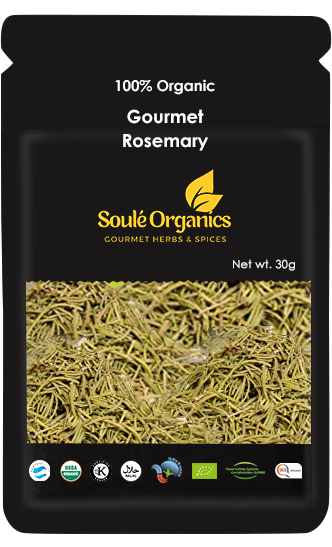ROSEMARY


What Is Rosemary?
Rosemary, small evergreen plant of the mint family the leaves of which are used to flavor foods. Native to the Mediterranean region, rosemary has naturalized throughout much of Europe and is widely grown in gardens in warm climates. The leaves have a pungent, slightly bitter taste and, dried or fresh, are generally used to season foods, particularly lamb, duck, chicken, sausages, seafood, stuffings, stews, soups, potatoes, tomatoes, turnips, and other vegetables, as well as beverages.
Culinary Use
Rinse fresh sprigs of rosemary under cold running water and pat dry. Recipes usually call for whole leaves, which are easily removed from the woody stems. Whole sprigs of rosemary may be added to stews and meat dishes.
Rosemary is most often used to season meats, especially lamb, pork, and chicken. Chopped rosemary can be added to bread or biscuit dough, and the flavor will infuse throughout during cooking. Potatoes, beans, and lentils also pair well with rosemary. Rosemary can be quite potent and is therefore usually used sparingly.
Because both fresh and dried rosemary can have a tough, pine-needle-like texture, it is usually chopped or crushed with a mortar and pestle before adding to recipes. Sprigs of rosemary with the stem intact can be added to soups and stews and then removed prior to serving.
Health Benefits
- Potentially Reduced Risk of Cancer
- Immune System Support
- Stress Reduction
- Improved Memory and Concentration
Nutritional Value
A single sprig of rosemary contains:
- Calories: 3.9 calories
- Protein: 0.1 grams
- Fat: 0.2 grams
- Carbohydrates: 0.6 grams
- Fiber: 0.4 grams
- Sugar: 0 grams
Forms Available
- Fresh Leaves
- Dried Leaves

